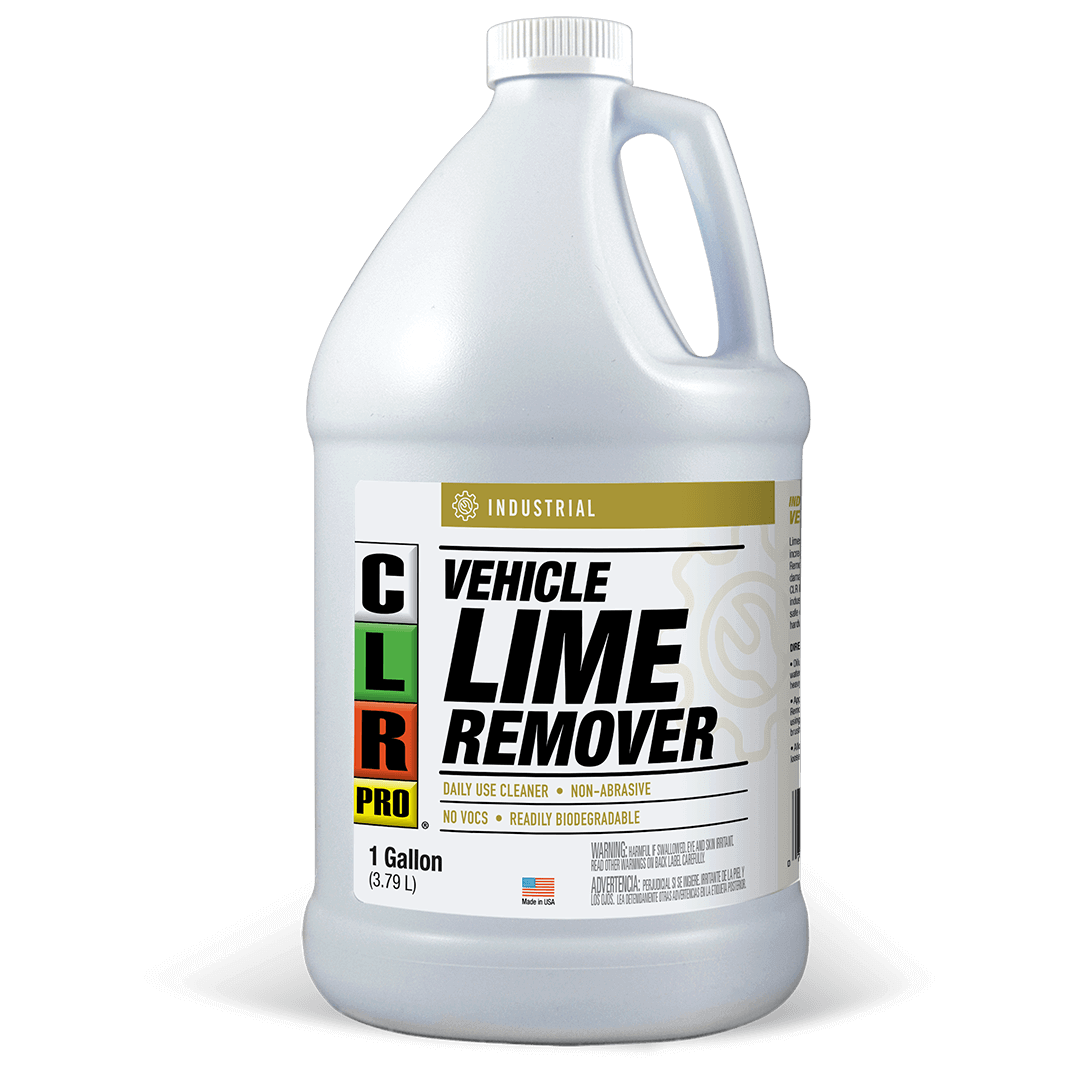
CLR PRO® Vehicle Lime Remover
Daily use cleaner to remove scale buildup from industrial and commercial vehicles and equipment.
- Cleans harmful scale buildup that can shorten service life of equipment and vehicle surfaces.
- Keeps vehicle windows clear with regular use.
- Safe on all exterior parts: metal, glass, rubber and plastic.
- Manufactured in the USA.
Available In:
How to use this product
- Spot test on an inconspicuous area before applying. Dilution and dwell time may vary by soil load.
- Dilute product up to 4:1 with clean water (1 part CLR to 4 part water). On heavy soil, product can be used at full strength.
- Apply solution directly onto scale buildup using a pump sprayer, or bucket and brush.
- Allow dwell time for product to loosen build up
- Scrub surface or use pressure washer to remove buildup. Rinse immediately with clean water.
Featured Video
Product ingredients




| Water | Dilutent: CAS #7732-18-5 | ||
| Dilutent: CAS #7732-18-5. Reverse Osmosis (RO) is a water treatment process that removes contaminants from water by passing the water through a membrane, (filter), where contaminants are filtered out yielding more pure quality water. | |||
| Lactic Acid | Chelating Agent: CAS #79-33-4. | ||
| Chelating Agent: CAS #79-33-4. Lactic acid is found in many yogurts and cheeses. It is also produced in the muscles during intense activity. Commercially, it is produced by fermentation of simple sugars. In cleaning products it functions as a chelating agent; a compound that makes metals more soluble in water. | |||
| Gluconic Acid | Chelating Agent: CAS #526-95-4. | ||
| Chelating Agent: CAS #526-95-4. This ingredient is an acid formed from the sugar glucose, which naturally occurs in fruit, honey and wine. It is a chelating agent; a compound that makes metals more soluble in water. | |||
| Lauramine Oxide | Surfactant: CAS #1643-20-5. | ||
| Surfactant: CAS #1643-20-5. Used in cleaners to modify the surface tension of water, to aid in even spreading and to allow mixing with oil and dirt so that they can be rinsed away; it is included in many soaps, detergents, and several groups of antiseptics. | |||
| Tripropylene Glycol n-Butyl Ether | Solvent: CAS #55934-93-5. | ||
|
Solvent: CAS #55934-93-5. Used to slow down the evaporation of many liquid products including oven cleaners and inks for ball-point and felt-tip pens. It is very effective at absorbing organic material. California CPRKA Designated Lists (12) US NTP Reproductive or Developmental Toxicants. https://ntp.niehs.nih.gov/publications/monographs/index.html (16) California NLs. https://oehha.ca.gov/water/notification-levels-chemicals-drinking-water (18) California TACs. https://ww3.arb.ca.gov/toxics/id/taclist.htm (20) California Non-Cancer Hazards. https://oehha.ca.gov/air/general-info/oehha-acute-8-hour-and-chronic-reference-exposure-level-rel-summary |
|||
| Yellow No. 5 | Colorent: CAS #1934-21-0. | ||
| Colorent: CAS #1934-21-0. A synthetic lemon yellow dye used all over the world, primarily as food coloring. | |||
| FD&C Blue No. 1 | Colorent: CAS #3844-45-9. | ||
| Colorent: CAS #3844-45-9. A blue dye used for foods and other substances. | |||




